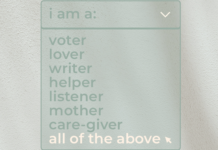If a man dressed in a gorilla suit walked in front of you, stopped, beat his chest, and then continued on his merry way, would you notice?
Before answering this question, consider the famous gorilla video. The video shows a group of people wearing either black or white shirts passing a basketball back and forth. The viewer is told to track how many times the players in the white shirts pass the ball. After about 30 seconds, a person wearing a gorilla suit strolls to the center of the screen, pounds his chest and walks away. Most viewers are so engaged in the task of counting ball passes that they fail to notice the chest thumping ape. It’s as if the guerilla was invisible. It doesn’t register.
A second experiment produced similar results. Twenty-four experienced radiologists were asked to look for cancerous lung nodules on a series of scans. Researchers had inserted a gorilla the size of a matchbook in one of the scans. Eighty-three percent of the radiologists missed it! Professionals who are trained to notice anything that looks amiss didn’t see it.
As the research demonstrates, people often miss what occurs right before their eyes. This phenomenon is known as “in-attentional blindness.” When we focus on one thing, we can become blind to others.
An article in Smithsonian Magazine explains:
“How could people miss something right before their eyes? This form of invisibility depends not on the limits of the eye, but on the limits of the mind. We consciously see only a small subset of our visual world, and when our attention is focused on one thing, we fail to notice other, unexpected things around us—including those we might want to see.”
If you automatically assume that you would have seen the gorilla in either scenario, think again. Your smartphone demonstrates the power of inattentional blindness and how it operates in everyday ways. Consider what you miss when your eyes are glued to that tiny screen. This joke says it all: Dance like nobody is watching. Because they’re not. They’re checking their phones
I wish you all the best,
Dr. Samantha Boardman






